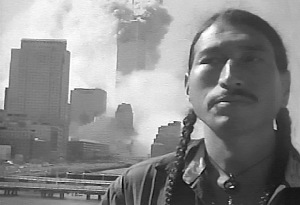I am grateful to the many artists who worked on this release. So much goes into the making of an album from musicians, recording and mastering engineers to liner notes, photography, and album design. To say, “I could not have done it alone,” is an understatement. This project was a joyous collaboration and I cannot express my appreciation enough for the honor to work alongside these many great talents.
Released January 20, 2021.
PRESS RELEASE by Tyran Grillo
“When you think you have a clear idea of a composer’s purpose, suddenly you realize that something is hiding behind it, and behind it, again and again. I will keep playing William Susman’s music for a long time.”
–Francesco Di Fiore, 2012
Violinist Karen Bentley Pollick, pianist Francesco Di Fiore, bayan accordionist Stas Venglevski, and flutist Patricia Zuber have been knitting restorative sonic garments from the compositional yarn of William Susman for over a decade. Their rapport is deeper and more apparent than ever on A Quiet Madness, an appropriately titled new masterwork for our current zeitgeist.
A Quiet Madness immerses the listener in a photorealistic sound world of understated beauty. At once calming and thought-provoking, it allows the ear and mind to make their own connections without feeling overwhelmed by thematic constraints. Susman’s precise harmonic and rhythmic languages invite us into a subdued, enchanting expression of madness that roams all over the map, akin to the mind wandering during a rainy day—or, perhaps clairvoyantly, akin to the strange passage of time spent in self-isolation during the collective trauma of COVID-19.
A Quiet Madness unfolds across six pieces that were composed between 2006 and 2013. Susman has curated these selections into a unified trajectory. Setting the stage is Aria. Excerpted from Susman’s opera-in-progress, Fordlandia, it features the composer at the piano and Pollick on violin. Its interlacing melodies give way to three Quiet Rhythms for solo piano, into which are shuffled a study in contrast: Susman’s 2011 Seven Scenes for Four Flutes, recorded and multi-tracked by Zuber, and 2006’s Zydeco Madness, played here by Venglevski, who also performed the piece’s premiere.
Although Susman describes the solo piano sections on this album as “quasi-interludes,” each of the Quiet Rhythms is in itself an intricate and autonomous examination in sound. These pieces are performed by Di Fiore, who is himself a composer working in a post-modern, post-minimalist language akin to Susman’s. Meanwhile, Seven Scenes for Four Flutes evokes a sequence of abstract yet vividly colorful scenes that interject a shining liveliness between the darker, more subdued energy of the Quiet Rhythms. Even greater contrast can be heard in Zydeco Madness, which Susman composed in 2006 as a response to the tragic events surrounding Hurricane Katrina. Hence, the relative peace of the concluding Quiet Rhythms No. 7. Despite being recorded before the pandemic, A Quiet Madness opens itself like a gift for a broken world, a place where insanity and solace indeed coexist in strange harmony, and where music is the only imaginable escape.
***
William Susman has created a distinctively expressive voice in contemporary classical music, with a catalog that spans orchestral, chamber, and vocal music, as well as numerous film scores. AllMusic calls him an exemplar of “the next developments in the sphere [of] minimalism,” and Gramophone has praised his music as “texturally shimmering and harmonically ravishing.” Susman’s training as a pianist in both jazz and classical traditions was influential in his evolution as a composer, and his music is notable for its integration of global influences.
Karen Bentley Pollick is one of America’s leading contemporary musicians, performing a wide range of solo repertoire and styles on violin, viola, piano, and Norwegian Hardanger fiddle. She currently serves as concertmaster of Valse Café Orchestra in Seattle, and Principal Second Violin and Festival Artist with the Colorado MahlerFest Orchestra in Boulder.
Francesco Di Fiore, pianist and composer, was born in Palermo. He launched his professional career in 1986, performing hundreds of concerts worldwide. In 1993 he won the “XV Internationales Kammermusik Festival Austria Waldviertel” in Horn, Austria. His album Pianosequenza features piano music in film, including Susman’s score to When Medicine Got It Wrong.
Patricia Zuber has performed with many major orchestras in the New York area including the American Symphony Orchestra, New York City Opera, New York City Ballet, American Composers Orchestra, New Jersey Symphony, and the Westchester Philharmonic. She appears regularly with the Metropolitan Opera Orchestra at Lincoln Center. She performs in Duo Zuber with her husband, percussionist Greg Zuber.
Stas Venglevski is a native of the Republic of Moldova, part of the former Soviet Union. A two-time first prize winner of the Bayan Competition in the Republic of Moldova, Stas is a graduate of the Russian Academy of Music in Moscow, where he received his Master’s in Music under the tutelage of famed Russian bayanist Friedrich Lips.

